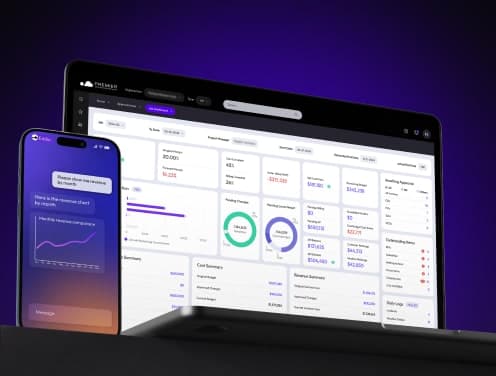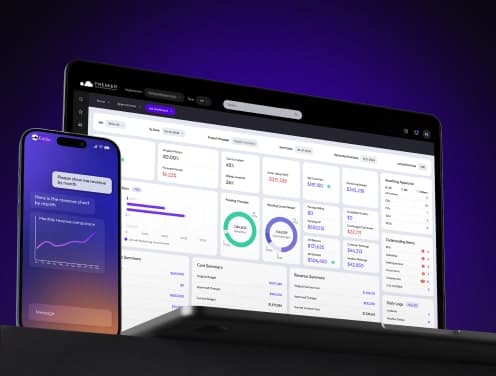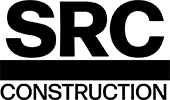
Understanding The Key Pillars Of Construction Safety Management
Safety in construction acts like the spine of the industry. It’s vital. It doesn’t just mean wearing helmets or being cautious on ladders. It’s about creating environments where every danger is anticipated, managed, and neutralized. Construction safety management is a broad concept that encompasses everything from on-site behavior to the very planning and organization of a project. It’s about keeping every worker safe, every project on track, and every outcome predictable.
Our construction ERP software changes the game. It's about more than managing money or keeping an eye on costs. It’s about integrating every piece of a construction project under one umbrella. It’s simplifying complex processes so every team member can work better, smarter, and safer. With our platform, efficiency isn’t just a goal. It’s a built-in feature.
Regularly Inspect and Monitor Construction Equipment for Safety
With the proper functioning of construction equipment, safety on the job site can quickly become protected. Regular checks and routine maintenance of machines ensure that operations run smoothly and safely. These inspections are not just about compliance but about creating a culture where safety is integrated into every task.
Equipment failure can have significant repercussions, not just on project timelines but, more importantly, on worker safety. Regular monitoring acts as a preventive measure, identifying potential risks before they escalate into accidents. This proactive stance on equipment safety underscores the value placed on every team member’s well-being.
The responsibility of maintaining equipment safety is shared. From operators to site managers, each person plays a pivotal role in this ongoing process. Their insights and on-the-ground experience are invaluable, contributing to a comprehensive approach to equipment safety that keeps pace with the demands of the job.
Employ Construction ERP Software for Enhanced Safety Management
In the quest to enhance construction safety management, employing Construction ERP (Enterprise Resource Planning) software emerges as a game-changer. This technology streamlines safety protocols, providing a centralized platform for managing all aspects of a construction project, including safety measures.
ERP software enables real-time communication across sites, ensuring that all team members are updated on safety protocols and alerts. It also facilitates the storage and retrieval of safety documentation, making compliance a less burdensome process. By integrating safety management into the broader project management framework, ERP software helps to embed safety as a core project value.
The analytical capabilities of ERP software offer another layer of safety management, allowing for the analysis of data to identify trends and potential risks. This insight drives better decision-making, allocating resources more effectively to mitigate safety hazards before they become critical issues.
Respond and Adapt to Safety Incidents with Agile Approaches
An agile approach to safety incidents emphasizes rapid response and adaptability. When an accident occurs on a construction site, the ability to quickly address and learn from the incident is crucial. It’s about fostering a resilience that not only deals with the immediate aftermath but also integrates those lessons into future safety plans.
This agility extends beyond the physical response to incidents. It encompasses an openness to reassessing and revising safety protocols in light of new evidence. An agile mindset accepts that improvements can always be made and views every incident as an opportunity to enhance safety measures.
The iterative process of evaluating safety incidents and adapting strategies accordingly ensures that safety management is responsive to the ever-changing dynamics of construction sites. It supports a culture where safety evolves as a reflection of ongoing learning and commitment to protection.
Implement Rigorous Training and Education for Construction Workers
Training and education form the bedrock of any robust safety strategy in the construction industry. It equips workers with not just the skills but also the mindset to prioritize safety in every task undertaken. Comprehensive training programs go beyond regulatory compliance, fostering a culture of safety that permeates the entire organization.
More is needed to train workers in the use of equipment or completion of tasks. Modern training programs focus on building awareness of potential safety risks and how to mitigate them. These programs combine theoretical knowledge with practical application, ensuring that workers can respond appropriately in real-world scenarios.
Effective training also encompasses emergency response procedures. Knowing how to act in crises can significantly reduce the risk of injuries and accidents. Regular training on these protocols keeps them front of mind, reinforcing the importance of safety and readiness.
Develop a Comprehensive Construction Safety Management Plan
A construction safety management plan acts as the blueprint for safety procedures on any construction site. More than a mere compliance document, a well-rounded safety plan serves as a guide for all staff, underlining the commitment to safety at every step of the project.
Tailoring the safety plan to the specific needs of each project is crucial. Every construction project presents its own set of risks, demanding a customized approach to safety management. Identifying potential hazards at the outset of the project allows comprehensive safety plans to be developed that address these risks proactively.
Consistency in the communication and implementation of the safety management plan ensures all team members are aware of their responsibilities. Regular reviews and updates keep the plan relevant, adapting to the changing dynamics of the project and lessons learned during its execution.
Foster Open Dialogue about Safety Across All Levels
Constructing a safe working environment is a collective responsibility that thrives in an atmosphere of open dialogue. Communicating safety procedures clearly and consistently to all workers encourages adherence and promotes a shared voice in the commitment to safety.
Senior management plays a vital role in setting the tone for safety-focused discussions. By creating a non-threatening environment that encourages feedback and ideas from everyone, companies enrich their safety culture with diverse insights and experiences.
Streamlining Projects with Online Construction Project Management Software
Our online Construction Project Management Software takes it further. It’s the bridge connecting every team member, task, and deadline. From small tasks to big milestones, everything becomes clear, manageable, and aligned. It’s about more than just finishing projects. It’s about finishing them better—with safety, efficiency, and collaboration at the forefront. Get in touch today and see the difference for yourself.





















